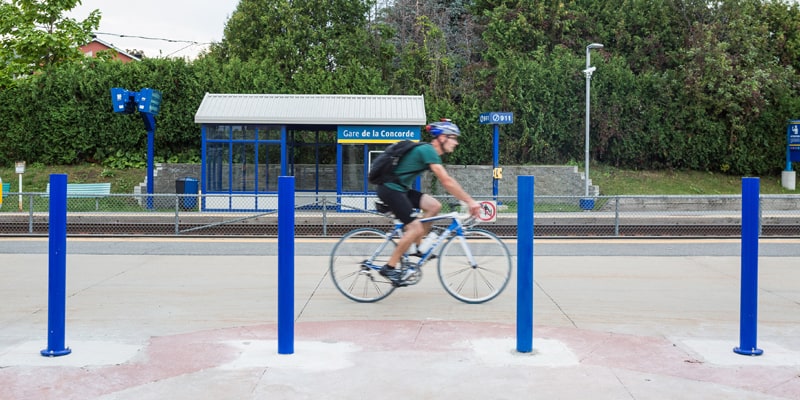During a trip to the Netherlands, I wondered what motivated the Dutch rail network to make bicycles available to travellers in the country’s train stations. After all, who doesn’t own a bike in the Netherlands? A planning manager explained to me that reducing a client’s train ride by five minutes would involve investing millions of dollars in rail infrastructure and equipment. In contrast, combining biking with public transit can save a client 5 to 10 minutes per trip. And for a fraction of this investment!
The transportation cocktail: a concept to be integrated systematically
The cocktail transportation concept is nothing new. About 25 years ago, Michel Labrecque, then president and CEO of Vélo Québec, demonstrated the importance of combining public and active transportation, an efficient and economical approach. Since then, efforts have been made to encourage citizens to choose the right mode of transportation at the right time. Apps such as Transit or Chrono help us better plan our travels.
Over the past few years, we have observed an increase in structuring public transit projects, such as the tramway in Québec City and the Réseau express métropolitain (REM) in Montréal. We feel it is vital, when integrating these major investments, to take into account the accessibility of these transportation modes for pedestrians and cyclists and to prevent, at all costs, the single occupant car from becoming the only way to access the stations.
The integration of active transportation must become an automatic reflex in developing public transit projects. It is clear that this is still not the case today and that the full potential of the transportation cocktail is far from being realized.
How to promote the transportation cocktail
First of all, pedestrians and cyclists must have easy access to the stations. The bicycle is still the best ally of public transit: it allows travellers to move quickly between the stations and desired destinations.
The installation of bike parking facilities is another important element. Well-located, efficiently laid out, properly sheltered and easy to find thanks to good signage, they send a clear message that biking is a pleasant, practical way to get to the stations. In addition, the cost of bike parking facilities is much lower than that of an outdoor car parking space, which can run from $2000 to $12,000.
Inspiring examples
The construction of a rail transit system requires major infrastructures and constitutes an excellent opportunity for creating multipurpose paths for walking or biking. This is common practice elsewhere in Canada (e.g., in Vancouver and in Ottawa on the Millennium and O-Train Lines) and in the United States. These paths provide access to the stations, complement public transit and attract new sustainable mobility users.
It is by thinking biking and better integrating active travel that we will be able to design the best public transit projects. Walking or biking to public transit access points offers numerous benefits for health, the environment and the economy and helps integrate physical activity into daily travel, without any emissions. Moreover, those who travel by foot or bike help generate major savings compared with those who use a car, due to the costs of developing, managing and maintaining parking lots and drop-off points.
In this context, can we really afford to ignore biking in developing our structuring public transit projects?
Jean-François Rheault
President and CEO


